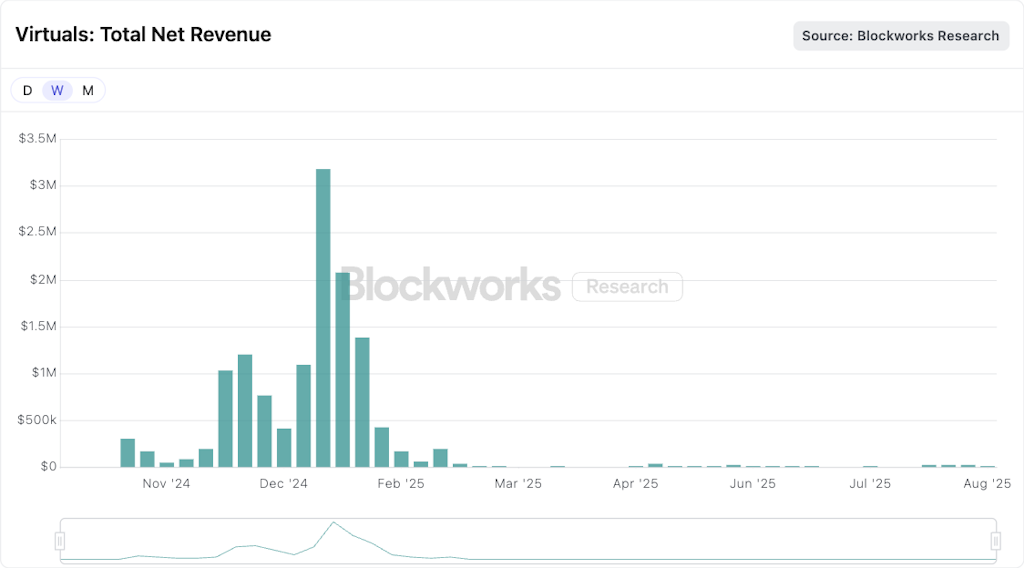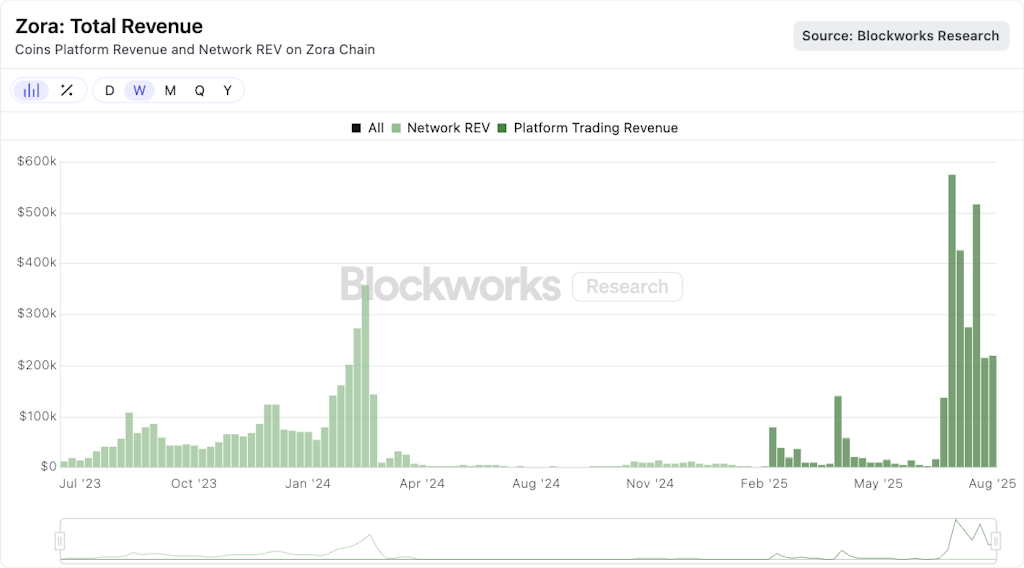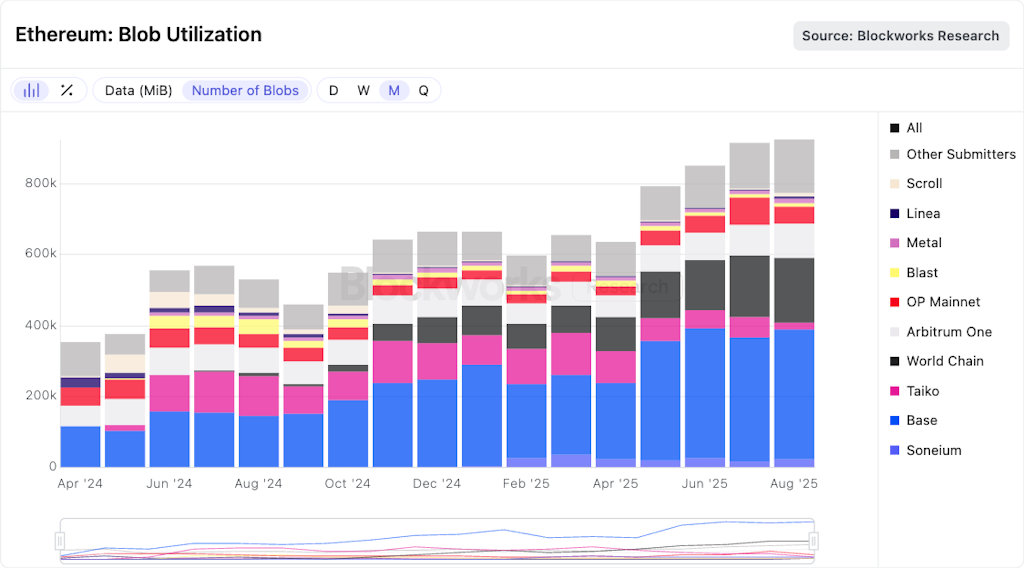Crypto needs more than launchpads for mass adoption
The hunt for a killer app on Base hits a wall

TeaGraphicDesign/dewa hartawan/Shutterstock and Adobe modified by Blockworks
This is a segment from the Empire newsletter. To read full editions, subscribe.
Last week, I wrote about the three killer-est apps of the cycle: Polymarket, Hyperliquid, pump.fun.
Notice that none of them is on Base.
Base has now had two shots at facilitating a potential killer crypto app already this cycle: AI agent launchpad Virtuals Protocol, the “Wall Street for AI Agents,” and now social media platform Zora, with the latter seeing two decent runs in the past 18 months.
Between December 2024 and January 2025 — peak Truth Terminal hype — Virtuals generated almost $11 million in net revenue, according to Blockworks Research data, during which time more than 13,000 different AI agents were tokenized.
Last month: $105,000 revenue; 151 agents launched, even after Virtuals expanded beyond Base to Solana earlier this year.

Zora, which supports creator coins and turns every post into a tradable coin, has otherwise arrived at a key inflection point.
On one hand, August was a record month for Zora protocol revenue, reaching $1.3 million, and number of posts, with 1.1 million pieces of content tokenized. But on the weekly scale, revenue has fallen by more than half and stayed there for the past fortnight running, with only $20,000 per day a regular occurrence right now.
The total number of posting accounts has also dropped to about 8,000 per day, down 60% from an August 14 peak of 21,000.

Of course, it’s too early to call time on Zora, and maybe these ups and downs will become mere blips on the path to mass adoption by content creators and consumers.
It’s more likely that both Zora and Virtuals have simply run headfirst into the same wall: There’s just not enough people in crypto who want to do more than trade on exchanges to consistently drive growth.
To be clear: Trading apps are apps too. With that in mind, Base does have a relatively popular app in Aerodrome, the AMM that’s pulling in anywhere from two-thirds to three-quarters of total app revenue on Base, per BWR data.
That’s around $15 million last month, which is decent but less than half the revenue made by pump.fun. It’s enough to place in first place when it comes to Ethereum layer-2s, with about 40% of all blobs posted to Ethereum mainnet coming from Base right now.

However, to the outside world, DEXs, AMMs, launchpads and so on are not “apps” in the traditional sense. Which, when we’re discussing heady concepts like massive mainstream adoption and widespread tokenization, is about all that really matters.
To the general public, an app needs to serve a purpose other than financial speculation, else it’s just a gaming venue in the minds of many and no different than PokerStars or DraftKings. Think Uber, AirBnB, Spotify, MyFitnessPal, Instagram, TikTok and Tinder, more than Robinhood and Trade Republic.
This dichotomy is why even Polymarket transcending the culture chasm might not be particularly satisfying, at least in a holistic sense.
While there’s certainly room for prediction markets to serve as “truth oracles” in our inevitable hyperfinancialized, media-minimized future, for now Polymarket is just a venue for betting on stuff happening in the culture. Markets related to politics attract about one-third of all open interest right now, followed by markets related to crypto prices (15%) and sports (12%).
Zora and Virtuals are indeed cool in their own ways. Helping creators to monetize their work and build fan bases with crypto is compelling, and has been for the better part of a decade, dating right back to Steemit. And perhaps AI agents will indeed be the eventual gateway for regular humans to interact with blockchain protocols — why not gain exposure to the most popular ones?
Underneath all the branding and presentation, however, Zora and Virtuals are still launchpads, and generously assuming that active addresses translate to active users apparently means there are only at most 20,000 or so people in crypto today willing to experiment with them (and slog through the often tricky EVM user experience, at least).
That’s with the indirect support of Coinbase, the closest thing crypto has to a majorly influential corporate powerhouse.
Maybe next cycle, there will be 50,000 willing participants. But I have a feeling the outside world won’t be convinced.
In the crypto space, tokenization for tokenization’s sake makes sense — everything that can be digitally represented is technically valuable. And depending on how broad your definition of value, intrinsically so.
The real question is thus: to whom, and for how long?
Get the news in your inbox. Explore Blockworks newsletters:
- The Breakdown: Decoding crypto and the markets. Daily.
- 0xResearch: Alpha in your inbox. Think like an analyst.






